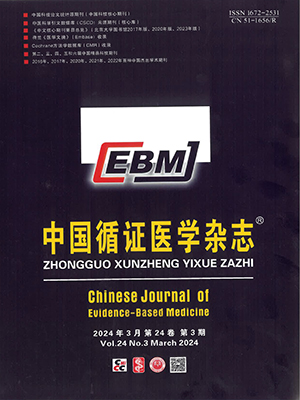| 1. |
陈丽萍, 黄晓燕, 肖易, 等. 我国特应性皮炎、银屑病、痤疮和荨麻疹的患病率及危险因素. 中南大学学报(医学版), 2020, 45(4): 449-455.
|
| 2. |
孙彩虹, 顾恒. 特应性皮炎的流行病学特征. 中国医学文摘(皮肤科学), 2016, 33(2): 101-106, 84.
|
| 3. |
Thomsen SF. Epidemiology and natural history of atopic diseases. Eur Clin Respir J, 2015, 2(1): 1.
|
| 4. |
顾恒, 尤立平, 刘永生, 等. 我国10城市学龄前儿童特应性皮炎现况调查. 中华皮肤科杂志, 2004, 37(1): 29-31.
|
| 5. |
Xu F, Yan S, Li F, et al. Prevalence of childhood atopic dermatitis: an urban and rural community-based study in Shanghai, China. PLoS One, 2012, 7(5): e36174.
|
| 6. |
Guo Y, Li P, Tang J, et al. Prevalence of atopic dermatitis in Chinese children aged 1-7 ys. Sci Rep, 2016, 6: 29751.
|
| 7. |
Wang X, Shi XD, Li LF, et al. Prevalence and clinical features of adult atopic dermatitis in tertiary hospitals of China. Medicine (Baltimore), 2017, 96(11): e6317.
|
| 8. |
解读中国特应性皮炎诊疗指南(2020版). 中国社区医师, 2020, 36(24): 91.
|
| 9. |
Blauvelt A, de Bruin-Weller M, Gooderham M, et al. Long-term management of moderate-to-severe atopic dermatitis with dupilumab and concomitant topical corticosteroids (LIBERTY AD CHRONOS): a 1-year, randomised, double-blinded, placebo-controlled, phase 3 trial. Lancet, 2017, 389(10086): 2287-2303.
|
| 10. |
Boguniewicz M, Alexis AF, Beck LA, et al. Expert perspectives on management of moderate-to-severe atopic dermatitis: a multidisciplinary consensus addressing current and emerging therapies. J Allergy Clin Immunol Pract, 2017, 5(6): 1519-1531.
|
| 11. |
Smith S, Baker C, Gebauer K, et al. Atopic dermatitis in adults: an Australian management consensus. Australas J Dermatol, 2020, 61(1): 23-32.
|
| 12. |
Kuznik A, Bégo-Le-Bagousse G, Eckert L, et al. Economic evaluation of dupilumab for the treatment of moderate-to-severe atopic dermatitis in adults. Dermatol Ther (Heidelb), 2017, 7(4): 493-505.
|
| 13. |
Antonio C, Gianluca F, Rossella B, et al. Cost-effectiveness analysis of dupilumab for the treatment of severe atopic dermatitis in adults in Italy. Global Reg Health Tech Assess, 2020, 7(1): 578.
|
| 14. |
Fanelli F, Pedone MP, Serra A, et al. PBI11 cost-effectiveness analysis of dupilumab for the treatment of atopic dermatitis in adolescent patients in Italy. Value in Health, 2020, 23(S2): 55.
|
| 15. |
《中国药物经济学评价指南》课题组. 中国药物经济学评价指南(20011版). 中国药物经济学, 2011, (3): 7-48.
|
| 16. |
de Bruin-Weller M, Thaçi D, Smith CH, et al. Dupilumab with concomitant topical corticosteroid treatment in adults with atopic dermatitis with an inadequate response or intolerance to ciclosporin A or when this treatment is medically inadvisable: a placebo-controlled, randomized phase Ⅲ clinical trial (LIBERTY AD CAFÉ). Br J Dermatol, 2018, 178(5): 1083-1101.
|
| 17. |
Zhao Y, Wu L, Lu Q, et al. The efficacy and safety of dupilumab in Chinese patients with moderate-to-severe atopic dermatitis: a randomized, double-blind, placebo-controlled study. Br J Dermatol, 2022, 186(4): 633-641.
|
| 18. |
Costanzo A, Furneri G, Bitonti R, et al. Analisi costo-utilità di dupilumab per il trattamento della dermatite atopica grave negli adulti in Italia. Glob Reg Health Technol Assess, 2020, 7: 57-65.
|
| 19. |
张剑聪, 谭飞莉, 黎伟达. 2种方案治疗皮肤浅表真菌病的成本-效果分析. 中国医药指南, 2008, 6(15): 8-9.
|
| 20. |
李康寯, 俞阿勇, 杨新军. 两种方案治疗过敏性结膜炎最小成本分析. 药物流行病学杂志, 2009, 18(2): 126-128.
|
| 21. |
胡俊华, 张艳霞, 胡艳秋, 等. 不同剂量吸入性皮质类固醇联合长效β2激动剂治疗成人持续性哮喘患者的效果及成本-效益分析. 中国药物滥用防治杂志, 2022, 28(6): 736-739, 744.
|
| 22. |
Wang L, Zhang J, He X, et al. POSC396 real-world treatment pattern and direct medical costs of atopic dermatitis in china: a retrospective claims database analysis. Value in Health, 2022, 25(1): 67.
|
| 23. |
肖珊, 刘丽英, 郑瑞庆, 等. 2种中西结合方案治疗普通型手足口病的成本-效果分析. 中国当代医药, 2016, 23(26): 133-136.
|
| 24. |
药智网. 度普利尤单抗单价. 2022.
|
| 25. |
石鲁月, 罗一夫, 崔永超, 等. 布地奈德福莫特罗粉吸入剂与沙美特罗替卡松粉吸入剂治疗哮喘的成本-效果分析. 临床合理用药杂志, 2022, 15(4): 28-31, 35.
|
| 26. |
Brown MM, Brown GC, Brown HC, et al. Value-based medicine, comparative effectiveness, and cost-effectiveness analysis of topical cyclosporine for the treatment of dry eye syndrome. Arch Ophthalmol, 2009, 127(2): 146-152.
|
| 27. |
Jeffrey A. Biologic therapies for treatment of asthma associated with type 2 inflammation: effectiveness, value, and value-based price benchmarks. 2018.
|
| 28. |
Poole CD, Bannister CA, Andreasen JN, et al. Estimation of health-related utility (EQ-5D index) in subjects with seasonal allergic rhinoconjunctivitis to evaluate health gain associated with sublingual grass allergen immunotherapy. Health Qual Life Outcomes, 2014, 12: 99.
|
| 29. |
NICE. Dupilumab for treating moderate to severe atopic dermatitis. 2022.
|




